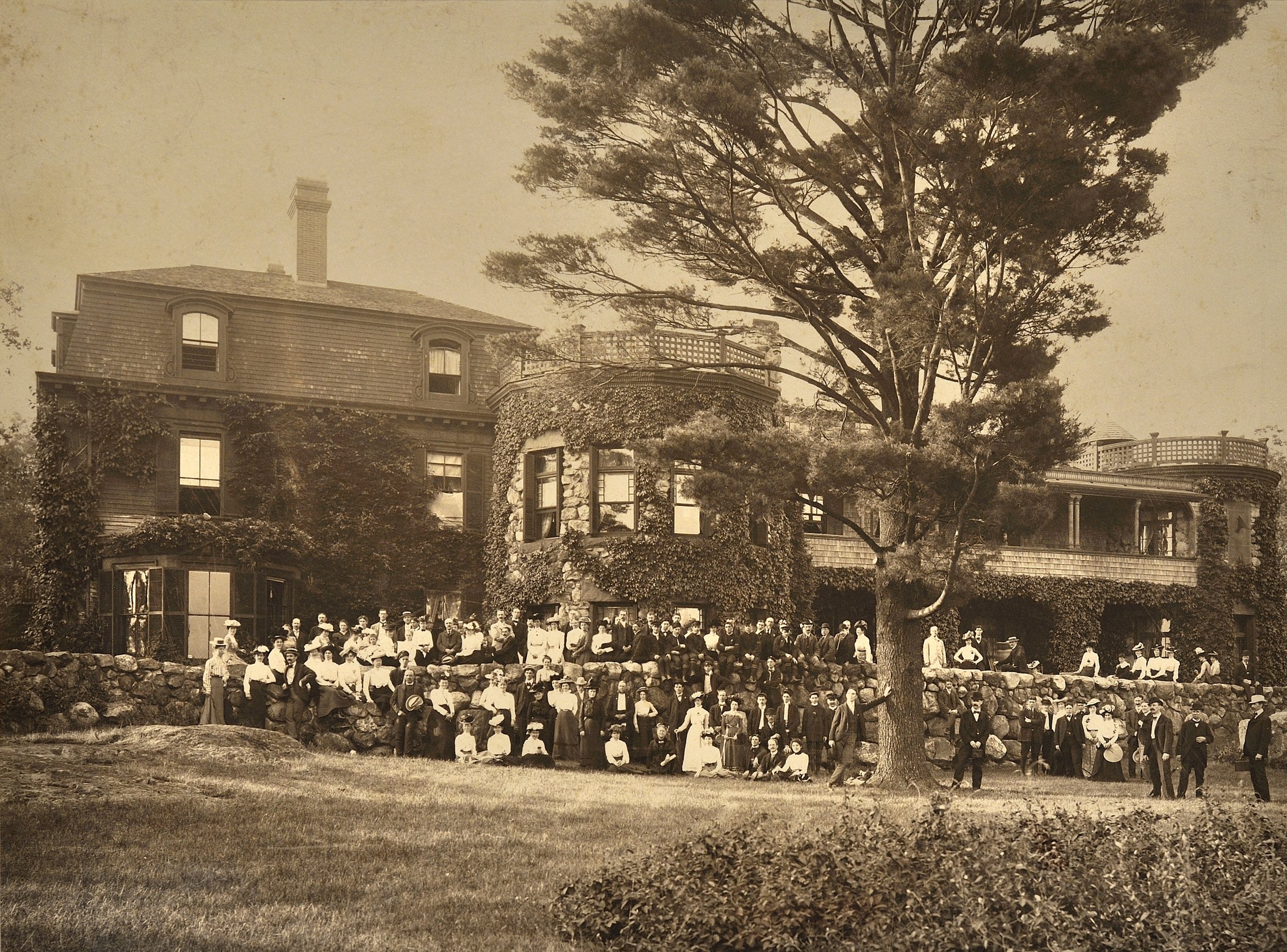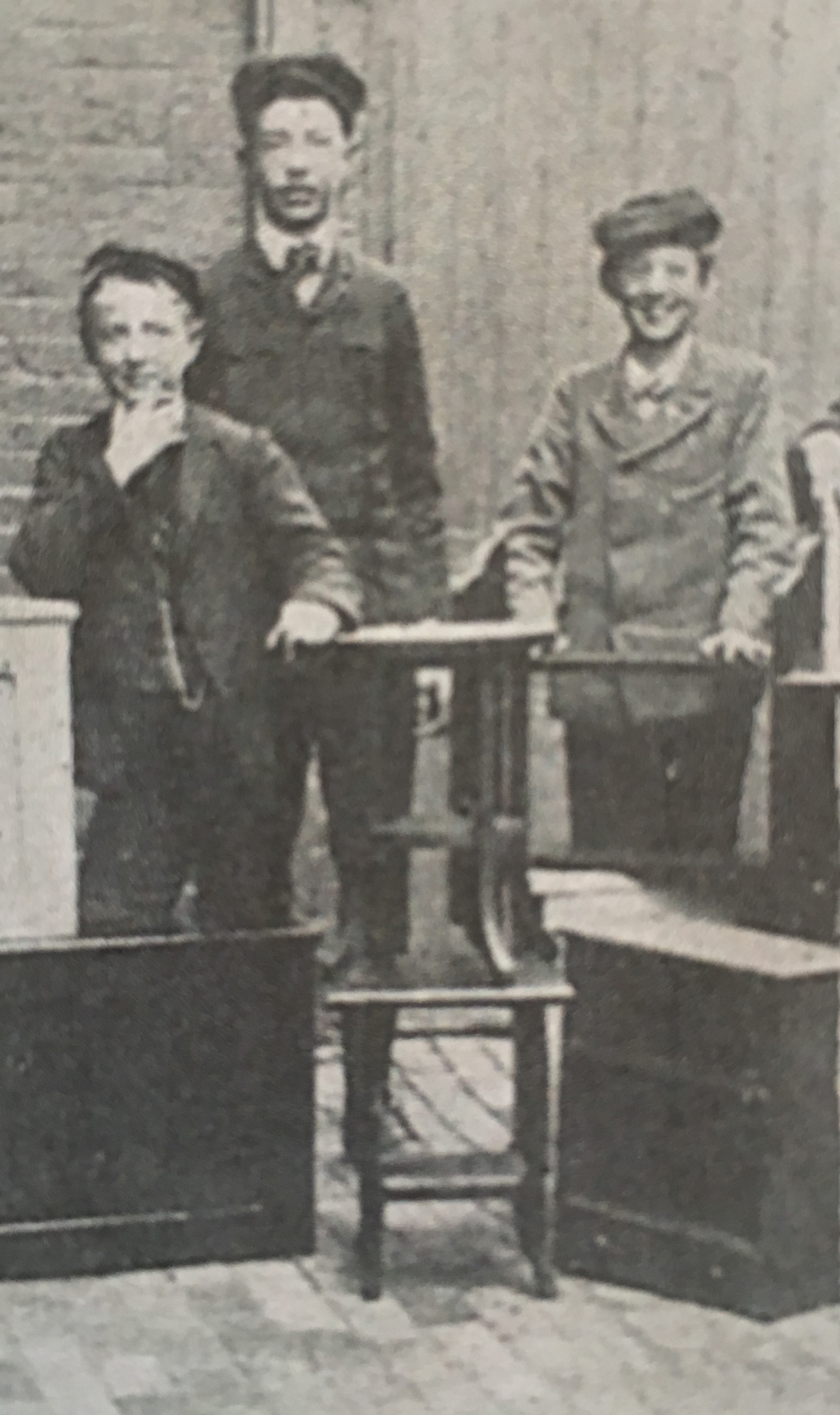Worker Advocates at the Height of the Labor Movement
1886, the year Stonehurst was completed, was known by contemporaries as “the year of the great uprising of labor,” with over 1400 strikes involving over 500,000 workers. At the Haymarket riot in Chicago, people gave their lives for the right to an 8-hour work day.
Witness to unprecedented social inequities, members of the wealthy Paine family became influential worker advocates. In 1890, they established a charity “to promote the spiritual, moral and physical welfare of the working classes… by fostering kindlier relations between rich and poor; by building…Workingmen’s Institutes, Working Girls' Clubs,…Libraries,… [and] Model Homes for the people; [and] by fostering Church...Missions….”
WORKINGMEN's & WOMEN'S INSTITUTES
The Paines founded, built and ran the Wells Memorial Institute (1881), the People’s Institute (1890), and a Working Girls Club (ca. 1890), among other organizations and structures. A contemporary reporter wrote, “It is a great thing to do, and in these days of jealousy between classes, it is the thing to do.”
The Wells Memorial Building—built and run by the Paines—became the headquarters of the Boston Central Labor Union and “the official and recognized place for socialized labor” in Boston. At its peak, the BCLU represented 90,000 members, who regularly met, organized, and planned strikes at the Wells Memorial.
The schools and social clubs offered field trips, classes, reading rooms & libraries, gyms & playgrounds and even a coffee house. They provided space for the Boys Institute of Industry, which later merged with the Boys & Girls Clubs of Boston. The Wells Memorial Institute was absorbed by the YMCA and United South End Settlements.
FIELD TRIPS
The Paine family invited workers of Boston to their country estate in Waltham each year to enjoy a day in the country. Country excursions became popular for the working and middle classes during the 1890s when workers succeeded in their efforts to shorten the work week. "Weekly outings were inaugurated last year for the summer months of June, July and August when most workmen get a half-holiday on Saturday afternoon."
Read an article about an early field trip, "A Day in Pleasant Places."
ADULT CLASSES
The Paines’ institutes, specifically geared toward working men and women, offered classes in the evening. “They are not ornamental subjects,” but rather mechanical drawing, electricity, steam, plumbing and political economy for men, and dressmaking, millinery, elocution, cooking, cleaning, emergency and hygiene for women. One reporter tried unsuccessfully to count the diverse nationalities of the students.
YOUTH CLASSES
The People’s Institute building housed the Boys Institute of Industry founded by Edward Everett Hale, with whom Paine served as a key board member. Boys learned carpentry and the building crafts while girls took classes similar to those offered to women at the People’s Institute.
Working Girls' Clubs
The Shawmut Working Girls' Club building constructed by the Robert Treat Paine Association still stands at 401 Shawmut Ave. in Boston. The Club where women could socialize and take classes at times offered discussions and debates. "Has the woman the right to earn money when being supported by her father or her husband?" was the most lively discussion of 1894. The Associated Charities (now Social Services of Greater Boston), founded and run by RT Paine, occupied this building three days a week. The Working Girls' Club sometimes rented out the halls at the Wells Memorial and People's Institutes for large gatherings.
LIBRARIES & READING ROOMS
The schools featured reading rooms and even the Roxbury Crossing branch of the Boston Public Library. Today, Stonehurst, the Paines' summer home in Waltham, houses a mini-branch of the Waltham Public Library.
MODEL HOMES FOR THE PEOPLE
Paine placed his Peoples’ Institute and club in the heart of a Roxbury neighborhood where he had built dozens of model homes in the 1880s. This neighborhood, now known as Frederick Douglass Square, is on the National Register of Historic Places.
MISSIONS
St. Andrews Mission of Trinity Church served residents of the West End of Boston. Lydia Paine and her daughter Ethel were deeply involved in the daily operation of this charity located near their Beacon Hill home. Its most innovative contribution was its women's medical dispensary run by Ethel's close friend Dr. Grace Walcott at a time when female physicians were rare. It was the first dispensary to be open evenings in order to provide medical aid to working women without loss of time or wages. In 1896, it served women from 21 countries on 4 continents: North America, Europe, Asia and Africa. The dispensary evolved into the Vincent Memorial Hospital and then the Vincent Dept. of Obstetrics and Gynecology at Massachusetts General Hospital.
To learn more about these efforts, explore this map of associated sites.
This program is funded in part by Mass Humanities. Thanks to a grant from Mass Humanities in 2017, we were able to hire an outside scholar to add to our understanding of the workers' institutes and student visits to Stonehurst. Read the final report and annotated bibliography.













